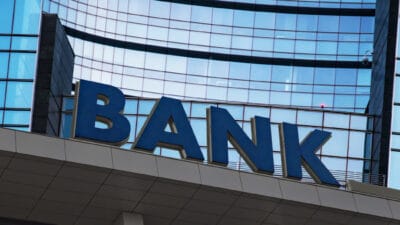Our ASX banks have long been renowned for their ability to pay big dividends (with full franking credits attached) to yield-hungry investors. Most self-funded retirees would have at least one (usually more) ASX bank in their income portfolios, but when there are four major ASX banking shares to choose from, it certainly pays to make the right choice for you (particularly if you're reliant on dividend income).
So lets take a look at each of the big four's dividends and see how they compare. I'll be looking at starting yields (naturally) but also each bank's payout ratio (the percentage of earnings that the bank pays out each year). The payout ratio is one of the best indicators of whether a company's dividend is sustainable.
Australia and New Zealand Banking Group (ASX: ANZ)
ANZ shares closed last week at $28.68, which means that the annual $1.60 dividend that ANZ has paid since 2016 will give you a starting yield of 5.58%, or 7.97% grossed-up. ANZ's current payout ratio is around 72% – which is a pleasing figure in my opinion, but not surprising considering ANZ's lower-end yield.
Commonwealth Bank of Australia (ASX: CBA)
CommBank had a decent track record of bumping up its dividends annually for a while there, but this seems to have stagnated, with the bank keeping the annual payout at $4.31 per share since 2017. Still, on current prices, this would give you a starting yield of 5.29%, or 7.56% grossed-up. Commonwealth Bank pays out 75% of earnings to achieve this (at current rates), in line with the banks' targeted range of 70–80%.
Westpac Banking Corp (ASX: WBC)
Westpac offers a slightly meatier dividend of $1.88 per share, which on current prices translates to a 6.29% yield, or 8.99% grossed-up. Westpac has also paid out this dividend since 2016, which on the most recent numbers indicates a payout ratio of 81%. As this ratio is above 80%, it indicates (in my opinion) that it may become unsustainable in the future, particularly if earnings remain stagnant or there is a significant shock in the Australian economy.
National Australia Bank Ltd (ASX: NAB)
NAB has been the only ASX bank to announce a cut in its dividend in recent times, with the bank moving from an annual $1.98 per share payout to $1.66 earlier this year. Even after this cut, NAB shares are offering a starting yield of 5.56% on current prices – representing a payout ratio of 77%. Although this ratio is still relatively high, I think with the recent dividend cut NAB's dividend is on a much more sustainable footing.
Foolish takeaway
Well, the numbers are in and there you have it. Westpac is currently offering the highest starting yield of the ASX banks. It also has the highest payout ratio and (in my opinion) the biggest chance of a cut down the road. If I were to choose one ASX bank today, it would most likely be NAB, as I think it better balances a higher yield with a sustainable payout








